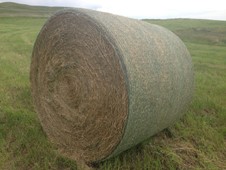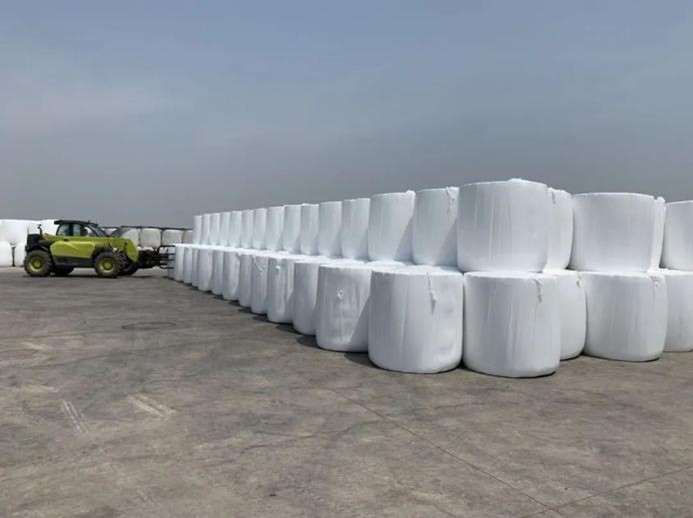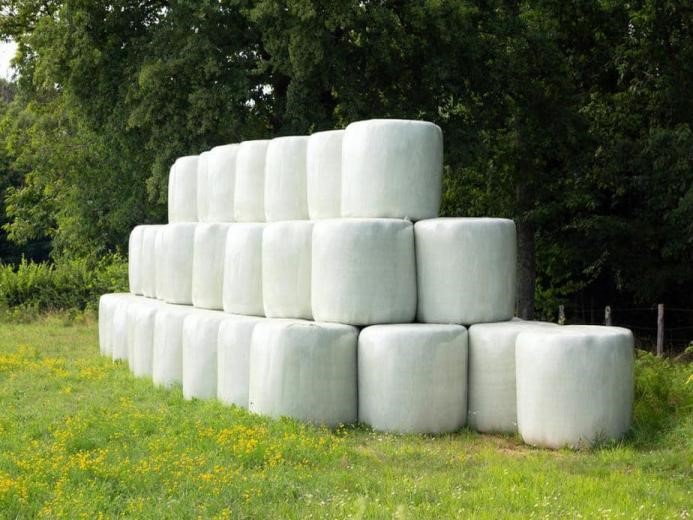
Farmers know that feed choices can make or break livestock health.
Hay, silage, haylage, and straw each serve different roles.
The right choice ensures nutrition and comfort all year round.
In this post, you’ll learn the key differences between these four options.
Understanding Forage and Bedding Basics
Forage is the edible plants we harvest for animals to eat.
Bedding, on the other hand, is material used for comfort and hygiene.
They may look similar in the field, but they serve very different purposes.
Preservation matters when grass stops growing in winter or during drought.
It lets farmers feed livestock when pasture is scarce.
Stored feed also helps plan for unexpected weather changes.
High-quality feed can improve animal health and growth rates.
Poor-quality feed may lead to illness, weight loss, or lower milk yield.
Farmers know every bite counts toward productivity.
There are two main preservation methods: drying and fermentation.
Drying removes most of the moisture to prevent spoilage.
Fermentation keeps moisture but seals out air to preserve nutrients.
Dry matter (DM) is the part left when all water is removed.
Feeds with higher DM usually have more nutrients per mouthful.
It also affects how long the feed stays fresh.
Preservation Method | Moisture Content | Typical DM % | Storage Style |
Drying | 10–20% | 80–90% | Barns, covered bales |
Fermentation | 40–75% | 25–60% | Silos, wrapped bales |
What Is Hay?
Definition and Overview
Hay is simply dried grass or legumes stored for animal feed. It can be made from plants like alfalfa, clover, or timothy grass. Farmers rely on it as a staple feed during seasons when grazing stops.
Production Process
To get the best hay, farmers cut crops at peak nutritional value. The forage stays in the field to dry until moisture is 12–20%. They turn or wilt it often so every part dries evenly. Once ready, the crop is baled into round or square shapes. Netwrap or twine holds the bale together for storage and transport.
Step | Description | Target Moisture |
Cutting | Harvest when nutrient levels are highest | — |
Drying/Wilting | Leave in field; turn multiple times | 12–20% |
Baling | Round or square bales, tied with netwrap/twine | — |
Storage | Keep dry and ventilated | — |
Nutritional Profile
If harvested at the right time, hay holds much of its nutrients. It can help prevent acidosis in calves when included properly in diets. Protein, fiber, and energy levels vary depending on the plant and harvest stage.
Advantages
Stores for months when kept dry and ventilated.
Easy to transport thanks to low moisture weight.
High demand across many livestock markets.
Disadvantages
Weather during curing can ruin an entire cut.
Cutting too early or too late lowers feed value.
Mold risk if bales are left outside in wet conditions.
Fire danger increases when moisture is over 20%.

Hay Bales

Large Square Hay
What Is Silage?
Definition and Overview
Silage is fermented, high-moisture fodder made from grasses, maize, cereals, or legumes. It uses anaerobic fermentation to lock in nutrients for months. Farmers often turn to it when pasture is unavailable.
Production Process
First, crops are cut at the correct maturity stage for maximum nutrients. They are chopped to break the tough plant epidermis. This allows bacteria to start the fermentation process quickly. The chopped material is compacted to remove oxygen. Finally, it is sealed in airtight storage—silos, pits, wrapped bales, or large bags.
Step | Purpose | Common Methods |
Cutting | Harvest at peak feed value | Mowers, forage harvesters |
Chopping | Expose plant sugars for fermentation | Precision choppers |
Compacting | Remove air pockets | Tractors, heavy rollers |
Sealing | Keep oxygen out for proper fermentation | Plastic sheeting, silage wrap |
Moisture and Dry Matter
Silage typically contains 40–75% moisture. That's a dry matter (DM) content of about 25–60%. More moisture means heavier transport and higher shipping costs.
Advantages
Retains more nutrients than hay.
Highly digestible, offering more energy per mouthful.
Less dependent on long dry spells for production.
Provides consistent quality feed year-round.
Disadvantages
Transport costs rise because of high water content.
Needs perfect sealing to avoid mold and spoilage.
Requires more costly harvesting and storage equipment.


What Is Haylage?
Definition and Overview
Haylage is forage cut and wilted to an in-between stage. It sits halfway between dry hay and wetter silage. Farmers bale it while still moist, then wrap it in stretch film. This partial fermentation creates a softer, more palatable feed.
Production Process
Haylage is cut later than silage but wilted longer in the field. The goal is moisture around 40–50% dry matter. That's drier than silage but not as dry as hay. Once baled, it must be wrapped quickly to keep out oxygen.
Step | Description | Target Moisture (DM) |
Cutting | Done slightly later than silage harvest | — |
Wilting | Left longer in the field to lose moisture | 40–50% |
Baling | Compressed into round or square shapes | — |
Wrapping | Covered in plastic stretch film, airtight | — |
Advantages
Holds more nutrients than hay.
Livestock find it easier and tastier to eat.
Less dependent on long, dry weather spells for curing.
Disadvantages
Doesn't last as long as properly stored hay.
Film tears can let in air, causing spoilage.
Costs more due to wrapping and special baling equipment.
Special Considerations
Haylage's higher dry matter makes it unsuitable for clamp storage. It works well for animals sensitive to very acidic feeds. Farmers often choose it for horses and young stock.
What Is Straw?
Definition and Overview
Straw is the dry stem left after harvesting cereal crops. It comes from wheat, barley, oats, or other grains. It has very little nutrition, so farmers don't use it as main feed. Instead, it serves mostly as bedding or a roughage filler.
Production Process
After grain is collected, the stalks remain in the field to dry. They are usually left in swathes until moisture drops to 12–20%. Once dry enough, farmers bale them into round or square shapes.
Step | Description | Target Moisture |
Harvesting | Grain removed, stems left in the field | — |
Drying | Natural drying in rows (swathes) | 12–20% |
Baling | Packed into large square or round bales | — |
Uses
Bedding for animals, thanks to its absorbent stems.
Mulching for gardens or crop fields.
Supplement in rations, providing bulk but little nutrition.
Advantages
Cheap and available wherever cereal crops grow.
Useful for more than just animal feed.
Helps keep stalls warm and dry during winter.
Disadvantages
Low nutrient value compared to hay or silage.
Easily molds if stored damp.
Dust can cause breathing issues for sensitive livestock.
Comparing Hay, Silage, Haylage, and Straw
Quick Comparison Table
Feature | Hay | Silage | Haylage | Straw |
Moisture Content | 12–20% | 40–75% | 40–50% | 12–20% |
Preservation Method | Drying | Fermentation | Partial Fermentation | Drying |
Nutritional Value | Medium | High | High | Very Low |
Storage Needs | Dry | Airtight | Airtight | Dry |
Common Uses | Feed | Feed | Feed | Bedding/Roughage |
Weather Dependence | High | Low | Medium | Medium |
Moisture and Dry Matter Impact
Dry matter (DM) is what's left after water is gone. Higher DM means more nutrients packed into each mouthful. Silage, heavy with water, offers energy but limits how much cattle can eat. Haylage strikes a balance—denser than silage, lighter than hay.
Digestibility and Animal Performance
Silage ferments, breaking down fibers into easier-to-digest feed. That's why dairy cattle often produce more milk on silage diets. Haylage can outperform silage when nutrient density per kilo is higher. Animals eat less bulk but still get plenty of energy.
Storage and Preservation Risks
Hay stored too damp can self-ignite, a real fire hazard. Silage and haylage spoil quickly if air seeps in. Farmers know mold pockets can waste tons of feed. Hay can lose 5–30% dry matter if left uncovered outside.
Choosing the Right Option for Your Farm
Factors to Consider
Every farm is different, so feed choices must match the animals. Dairy cows often need energy-rich silage for steady milk flow. Sheep or horses may do better on hay or haylage. Local climate matters—wet areas favor silage, dry regions favor hay. Storage space is another big factor. It's easier to store hay bales in a barn than silage pits in fields. Budget and machinery also play a huge role in the decision.
Balancing Multiple Forage Types
Many farms don't rely on just one type of preserved forage. Hay can stretch feed supplies during mild seasons. Silage provides energy when animals need a boost. Haylage often helps when weather doesn't allow full hay curing. Straw fits in as cheap bedding or filler to aid digestion.
Forage Type | Best Use Case | Extra Note |
Hay | Horses, sheep, storage-friendly farms | Needs dry climate |
Silage | Dairy cows, high-yield beef herds | Best energy source |
Haylage | Horses, young livestock, wet climates | Softer, more palatable feed |
Straw | Bedding for all, roughage in rations | Very low nutrients |
Cost Considerations
Feed costs are not just about the bale price. Farmers calculate real costs on a dry matter (DM) basis. Silage bales carry lots of water weight, making transport pricier. A simple rule helps: divide hay's price by 2.5 to compare with silage.
Example: If hay costs $225 per tonne, silage should be about $90. This makes comparisons fair by focusing on nutrients, not water weight.
Common Mistakes to Avoid
Cutting, storing, and preserving forage may look simple. Still, many farmers lose quality feed because of small errors.
Cutting at the Wrong Maturity Stage
Crops cut too early lose dry matter and yield. Cut too late, and the feed becomes stemmy with lower nutrition. Animals may eat less, which hurts performance.
Poor Sealing Leading to Spoilage
Silage and haylage must stay airtight. If air gets in, mold grows fast. One tear in the wrap can spoil an entire bale.
Underestimating Storage Space and Ventilation Needs
Hay needs dry barns or sheds with airflow. Silage piles require space for compaction and sealing. Ignoring this leads to feed loss and wasted investment.
Ignoring Moisture Testing Before Baling
Moisture content decides whether feed keeps or spoils. Hay baled too wet can overheat and even ignite. Silage too dry may not ferment properly.
Mistake | Result | Risk Level |
Early/Late Cutting | Low nutrition, poor intake | High |
Poor Sealing | Mold growth, wasted bales | Very High |
Lack of Storage Planning | Spoiled feed, higher losses | Medium |
Skipping Moisture Testing | Fire, failed fermentation | Critical |
Frequently Asked Questions (FAQ)
1. What is the difference between hay, silage, haylage, and straw?
Hay is dried grass or legumes stored as fodder. Silage is fermented, moist forage stored airtight. Haylage is semi-wilted forage, partially fermented, wrapped in plastic. Straw is the dry stalk left after harvesting grain crops, mainly used for bedding.
2. Which is more nutritious, hay or silage?
Silage usually contains more energy and nutrients because fermentation preserves them. Hay loses more nutrients during drying, especially in poor weather.
3. Why do farmers make silage instead of hay?
Silage is less weather-dependent, keeps more nutrients, and provides higher energy feed. Farmers often prefer it for dairy cows or fattening cattle.
4. Is haylage better than hay?
Haylage has higher moisture and often better palatability. It can be easier for livestock to digest compared to dry hay. However, it has a shorter shelf life and requires airtight wrapping.
5. Can animals eat straw like hay?
No, straw has very little nutritional value. It is mainly used as bedding, though sometimes fed as a roughage filler.
6. What are the risks of storing hay?
If hay is baled too wet, it can mold or even catch fire. Moisture testing before baling is critical to prevent losses.
7. How do you compare the cost of hay and silage?
Farmers use dry matter (DM) to compare true costs. A simple rule: divide hay's price by 2.5 to match silage value.
8. Which option is best for horses: hay, silage, or haylage?
Horses often do well on haylage because it is softer and less acidic than silage. Hay also works if cured properly, but silage may be too acidic.
9. How does moisture content affect forage quality?
Moisture impacts fermentation, storage life, and nutrient density. Too wet, and forage molds; too dry, and silage won't ferment properly.
10. What is the safest bedding material for livestock?
Straw is the most common bedding material because it's absorbent, soft, and cheap. However, it must be stored dry to avoid dust and mold.
Conclusion
Hay, silage, haylage, and straw each serve different purposes. Their differences lie in moisture, nutrition, and storage needs. The best choice depends on your farm's animals and climate. Always test forage quality and consult a nutritionist for guidance.



